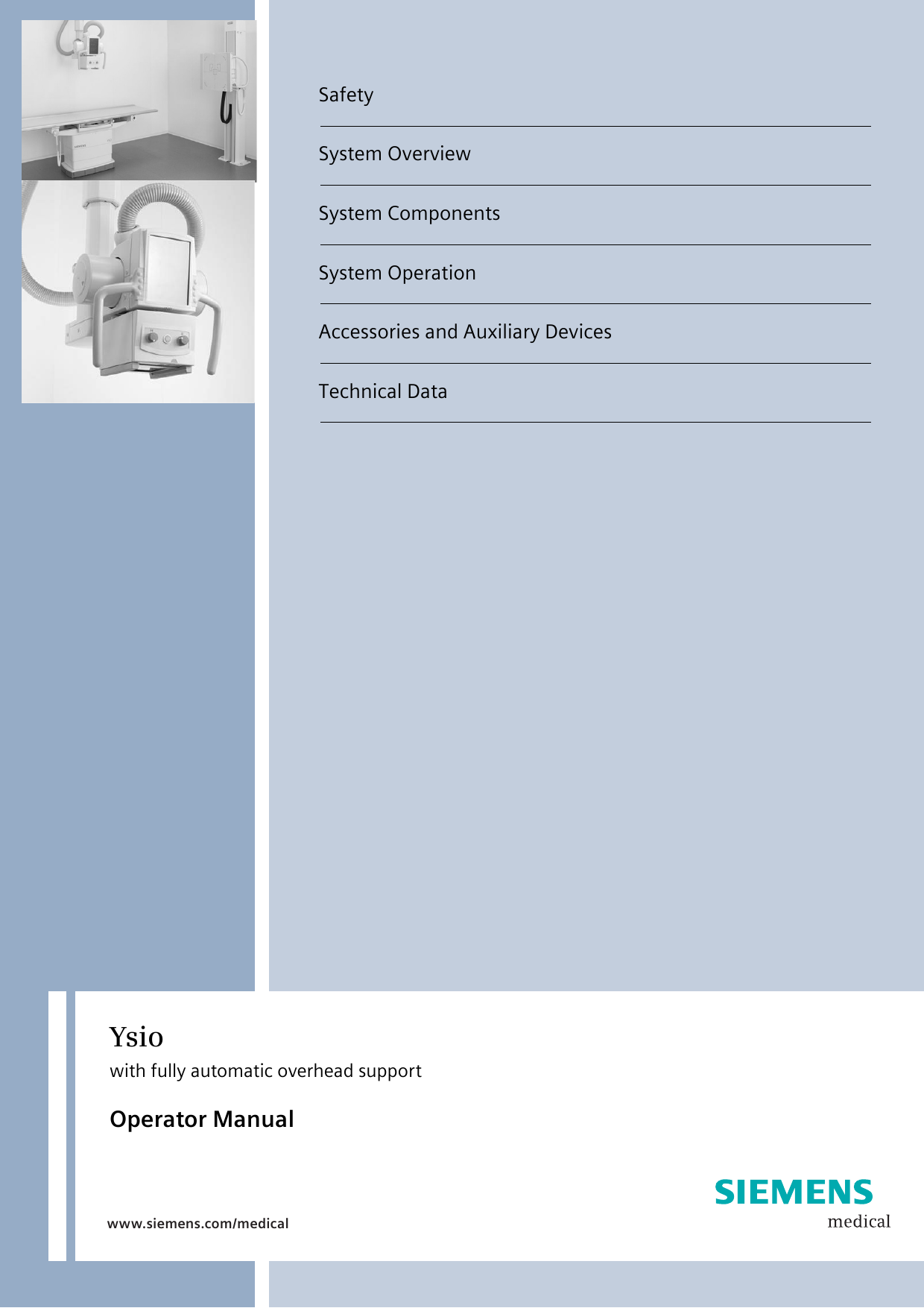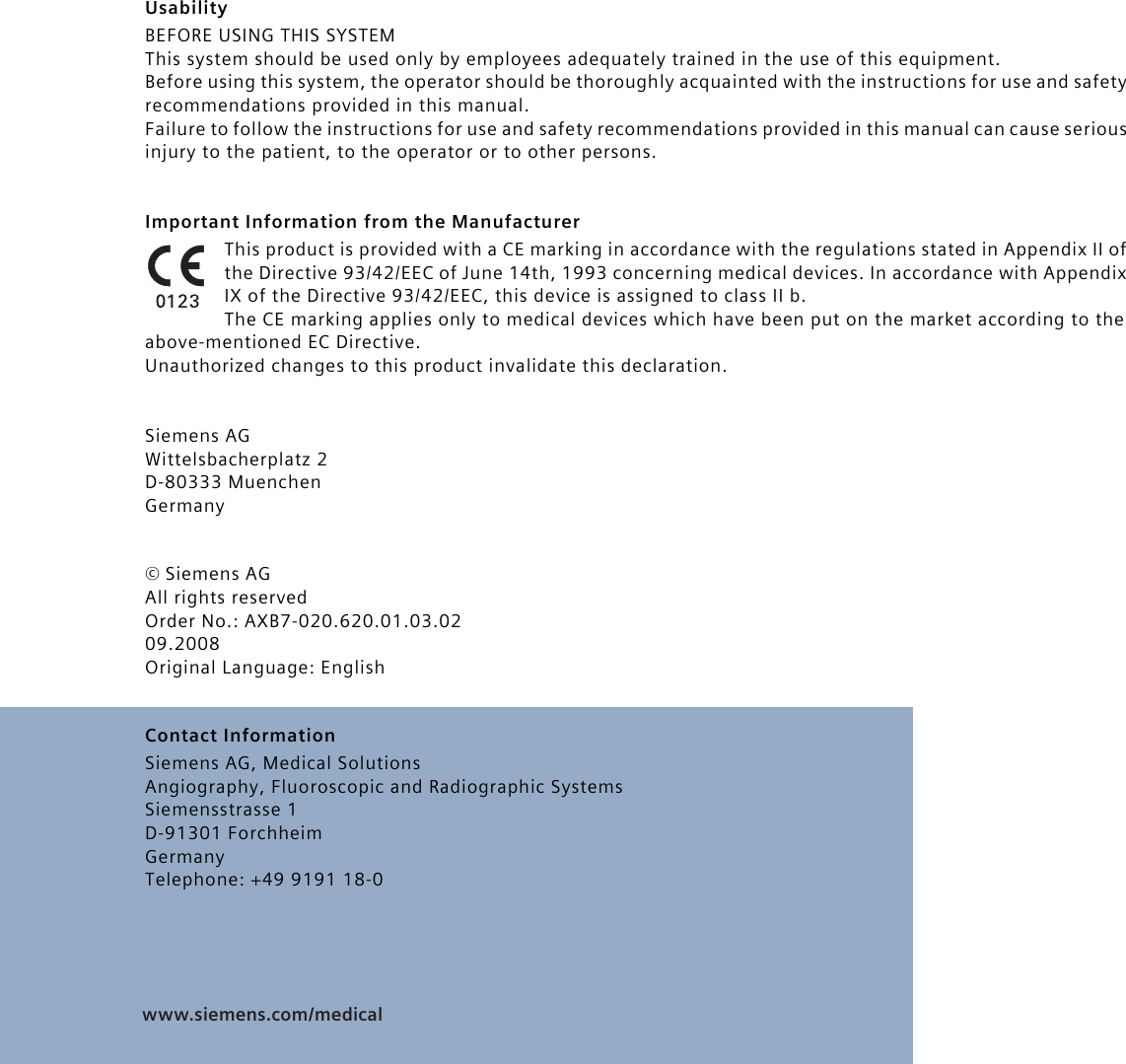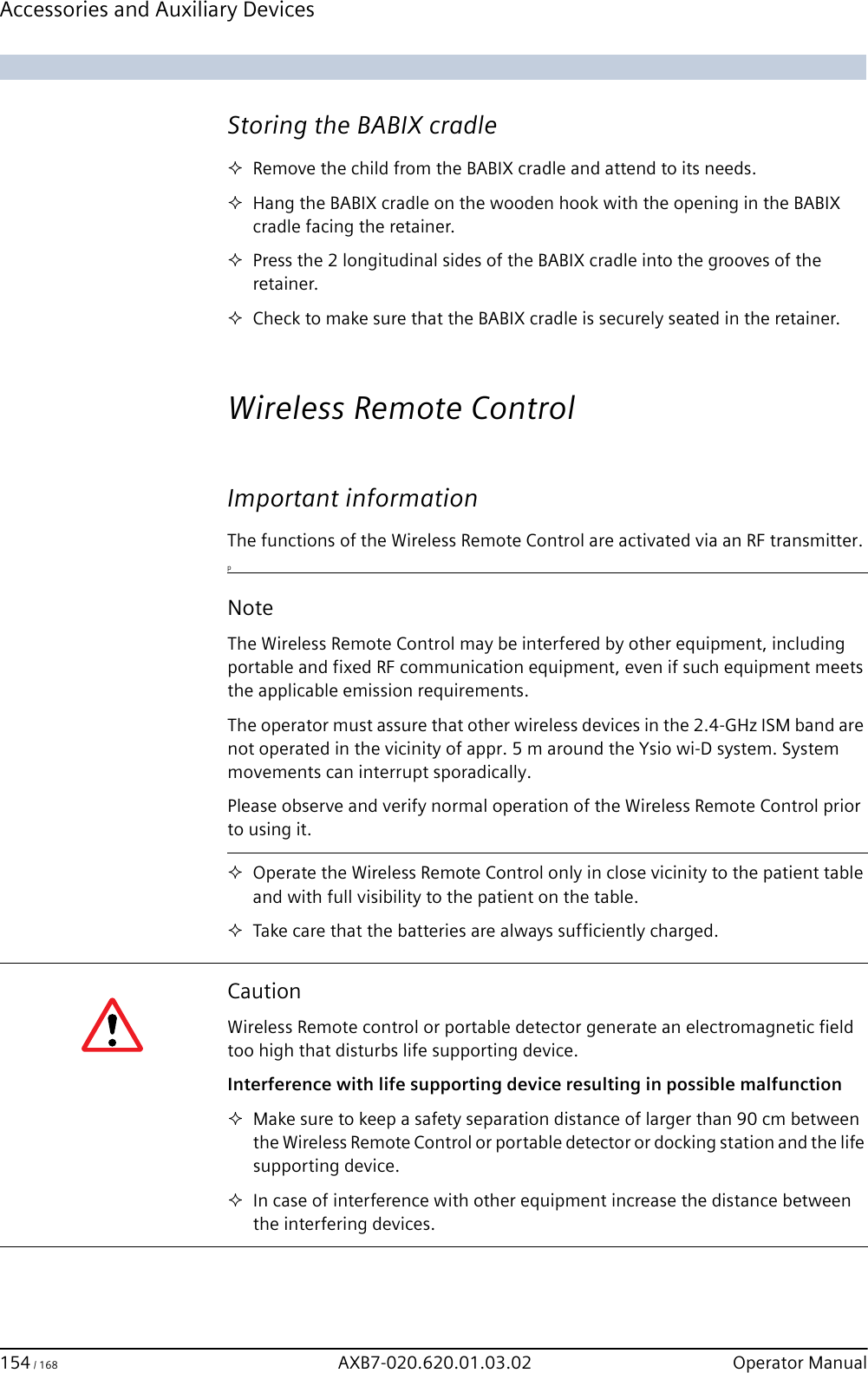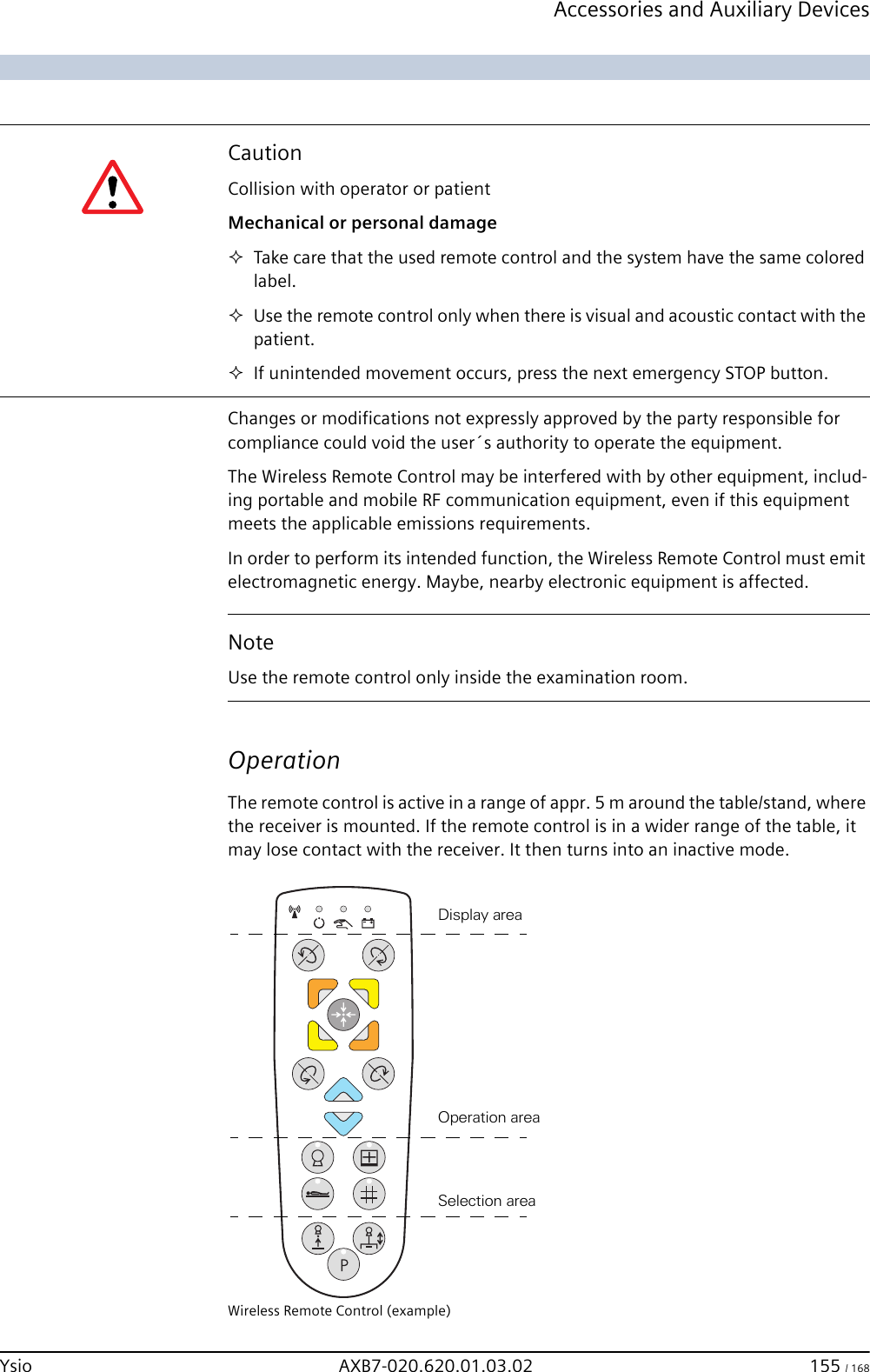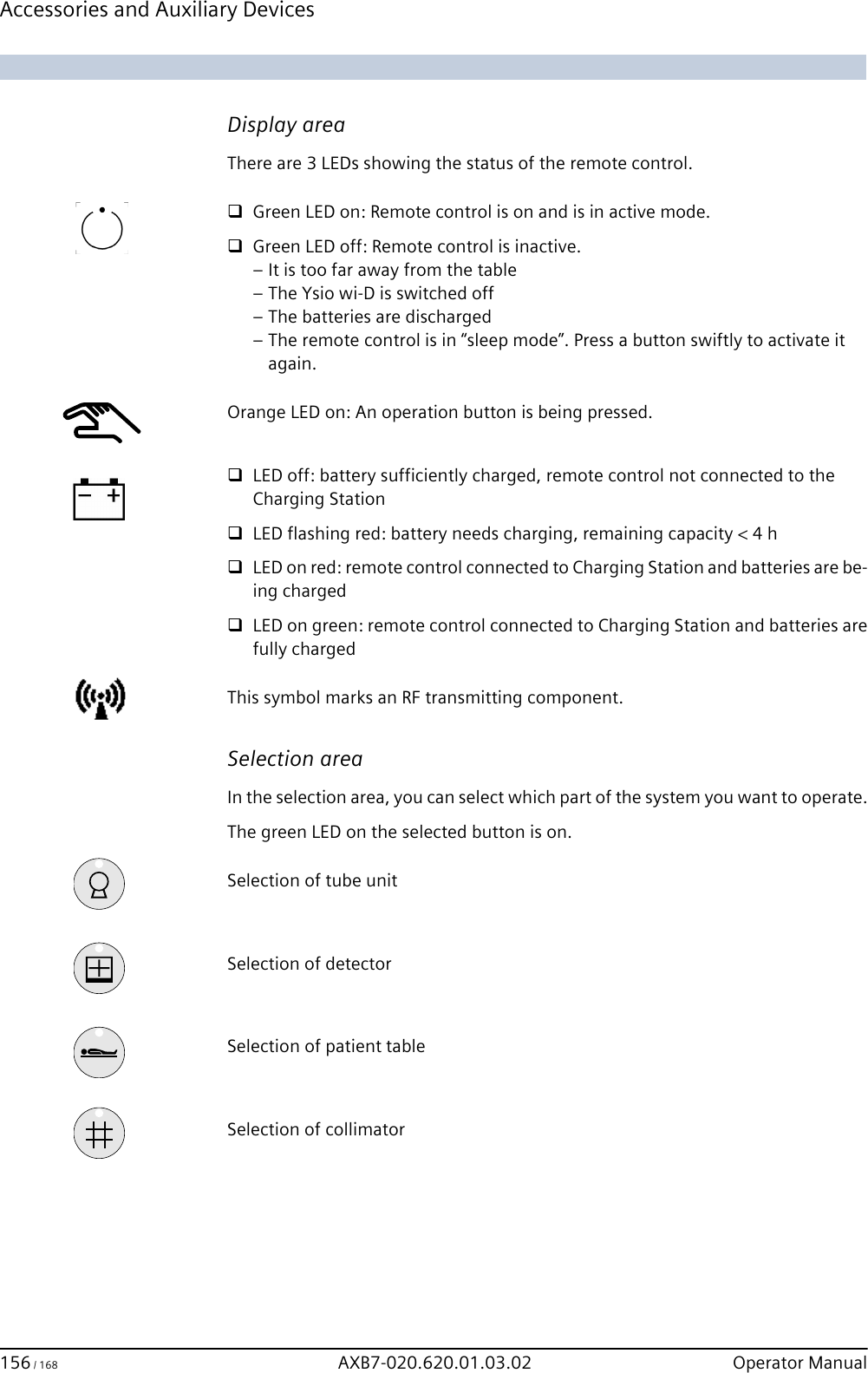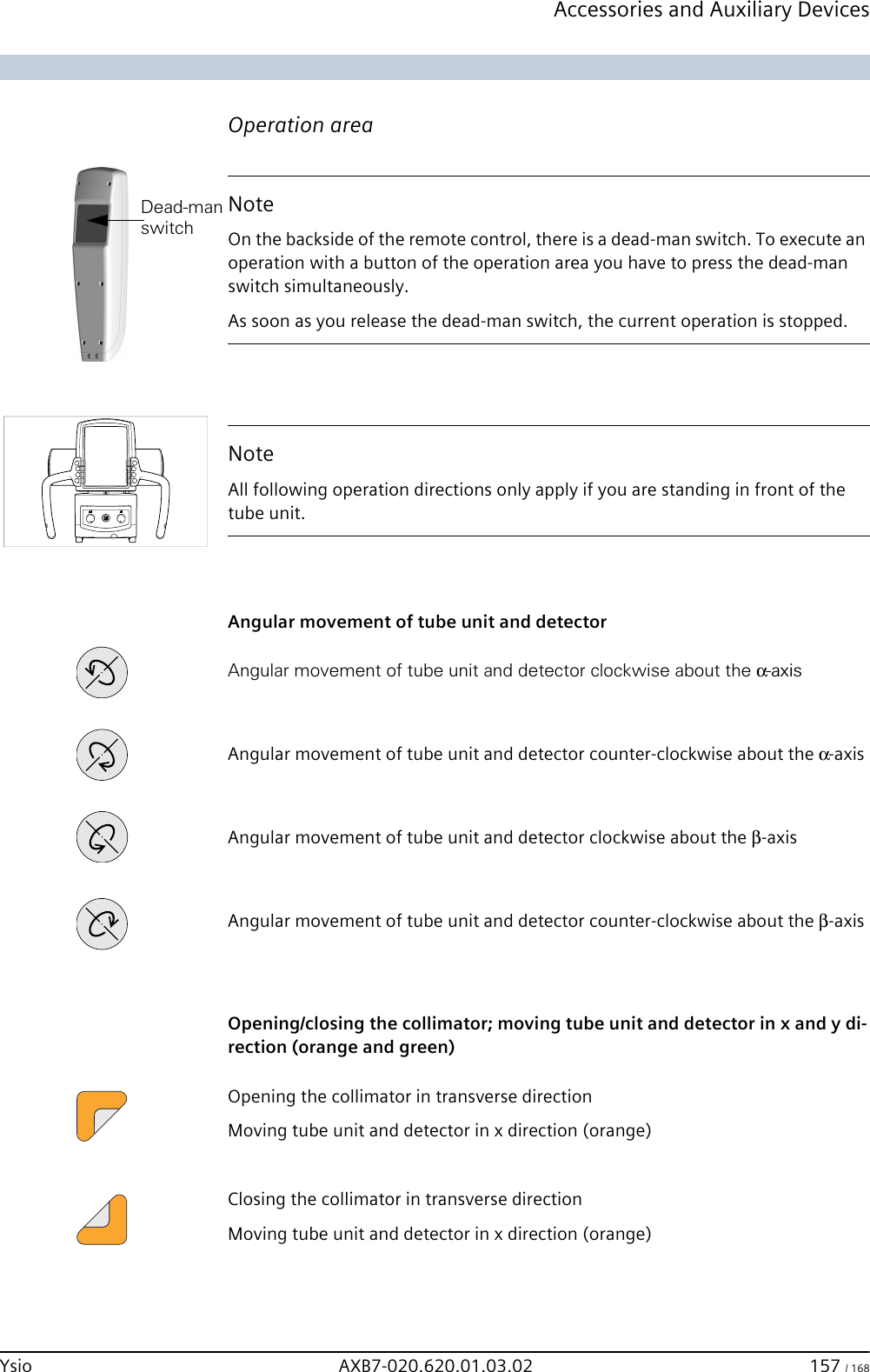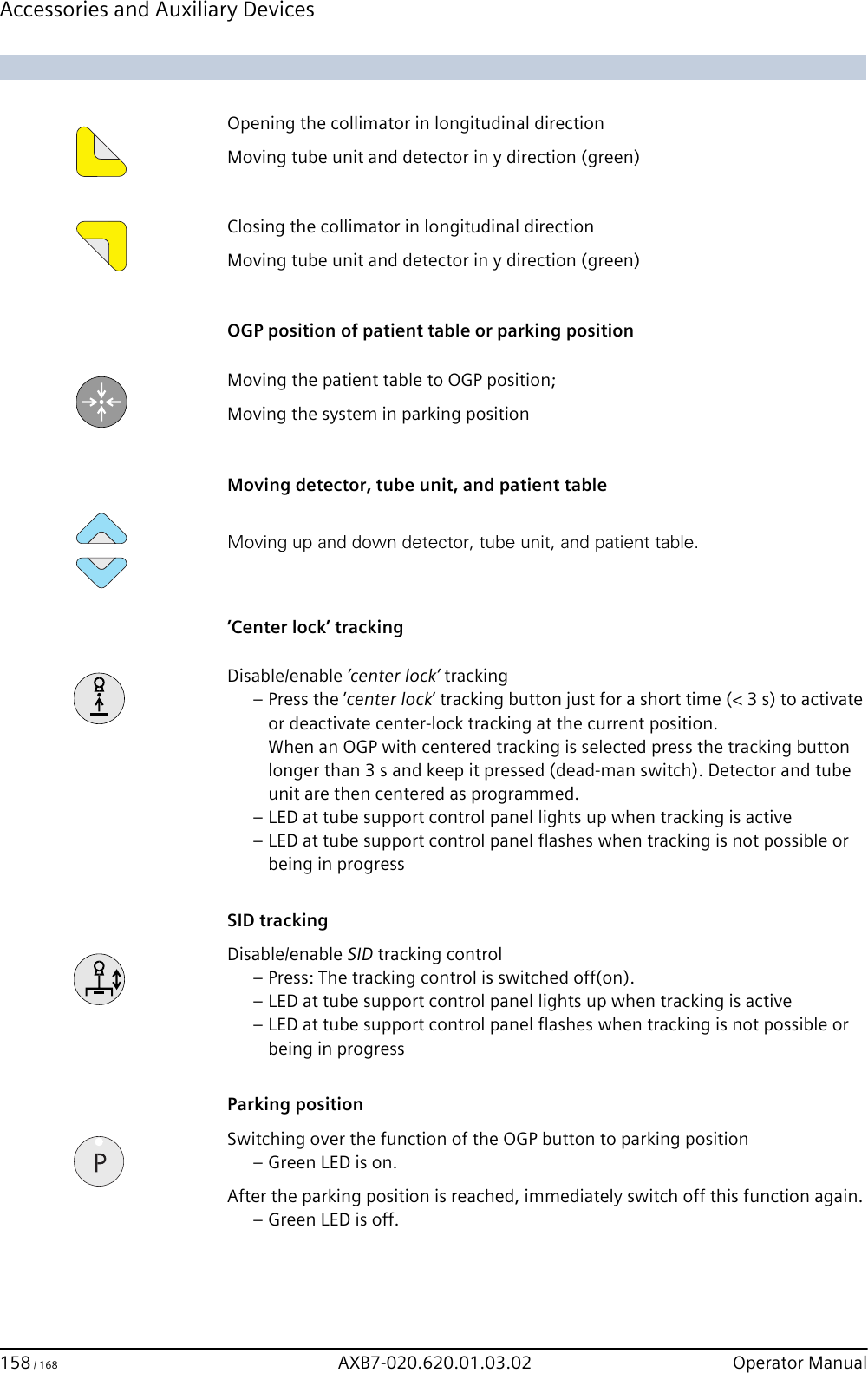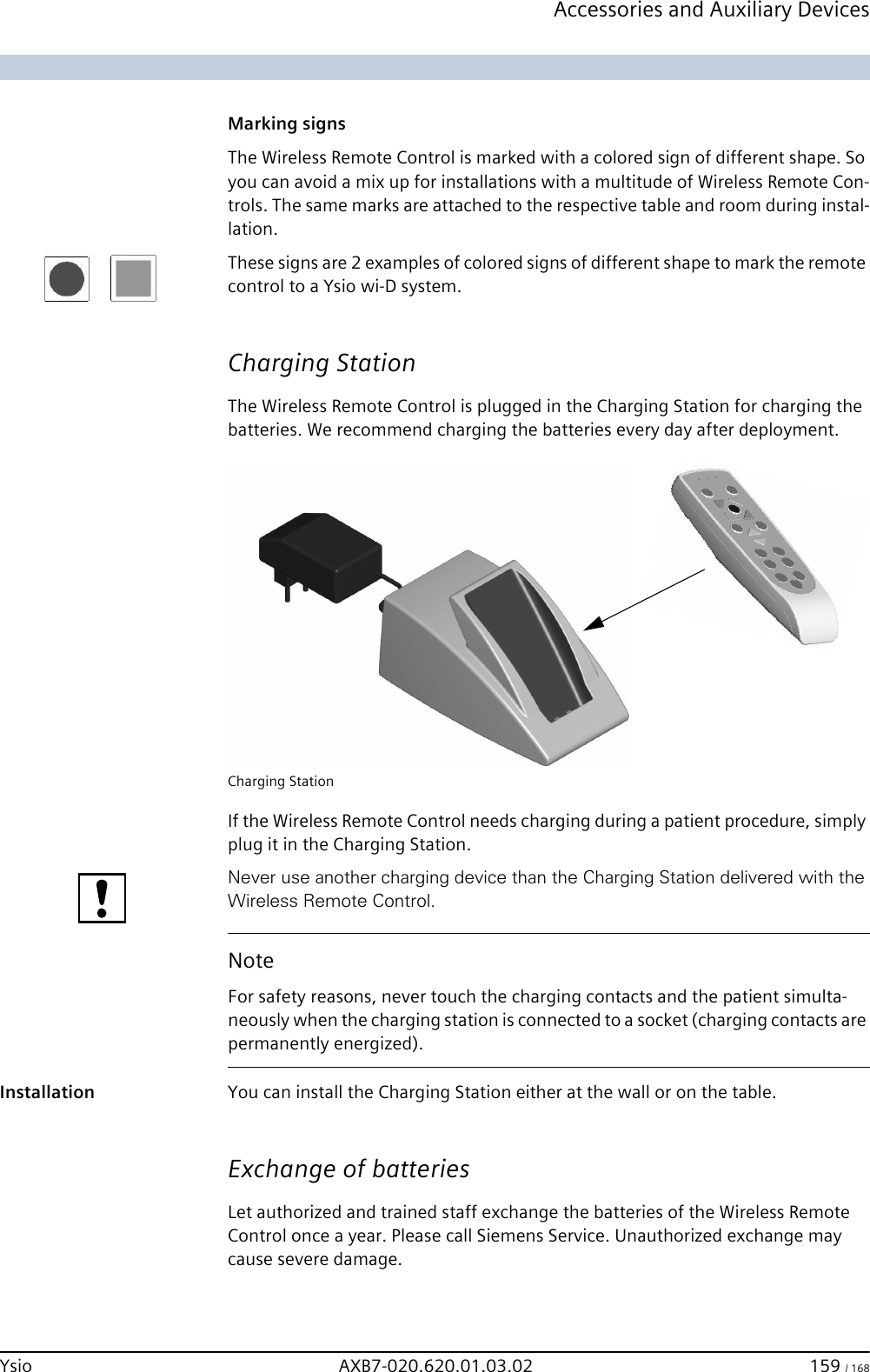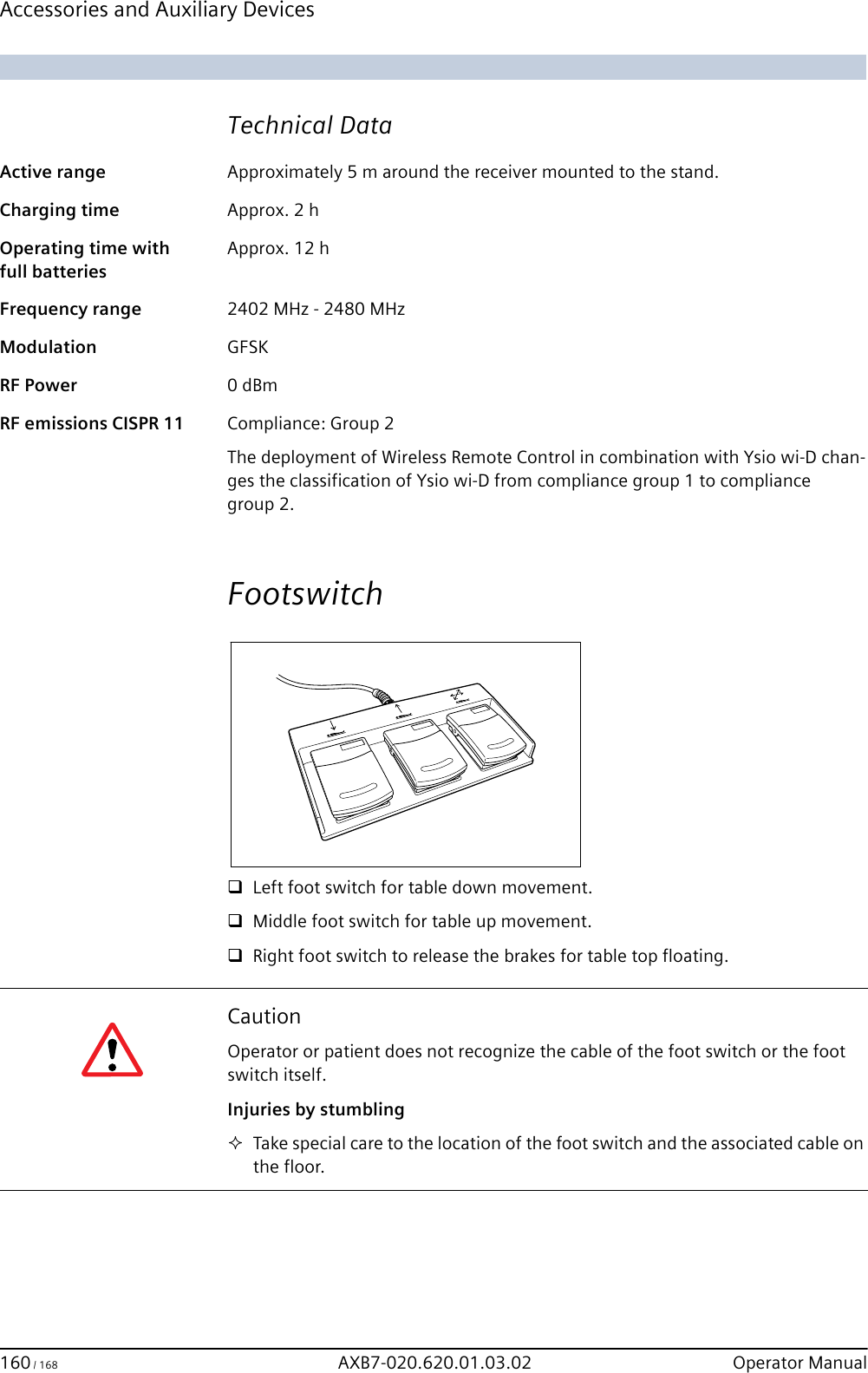Siemens Medical Solutions Department MED EH and S WRCII Wireless Remote Control II User Manual Ysio full
Siemens Medical Solutions, Department MED EH&S; Wireless Remote Control II Ysio full
Contents
- 1. Integration Manual
- 2. User Manual Footswitch
- 3. User Manual Host Hand Control
User Manual Footswitch
